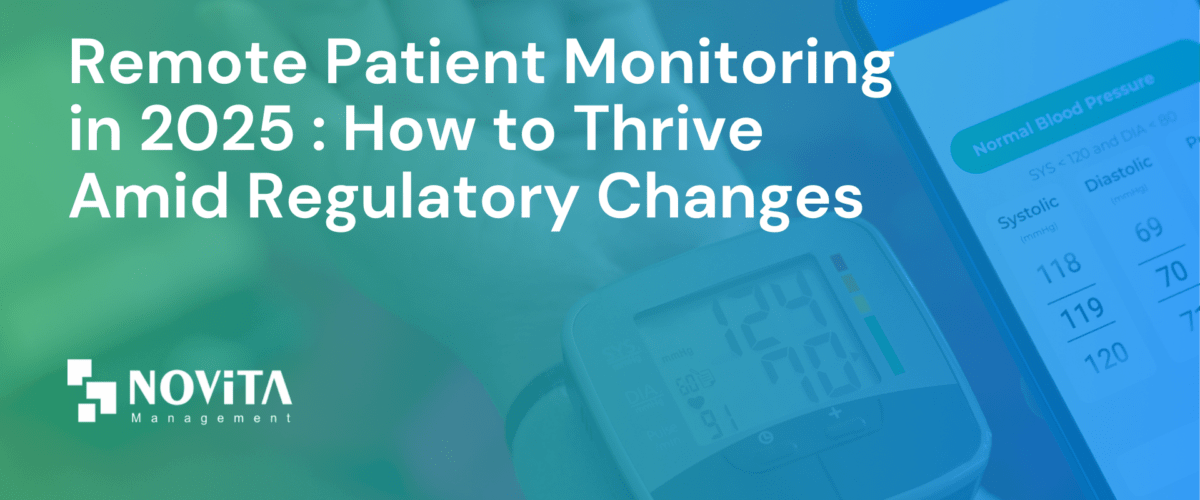
Remote Patient Monitoring (RPM) is on the cusp of a pivotal evolution in 2025, as sweeping regulatory changes from the Centers for Medicare & Medicaid Services (CMS) take effect. These updates are not merely adjustments but represent a comprehensive shift in how RPM is reimbursed, delivered, and integrated into the broader healthcare system. Healthcare providers, patients, and technology companies alike must prepare for this transformative period, which will redefine the standards of remote care management and innovation.
Key Regulatory Changes in 2025
- 1. Enhanced Reimbursement Structures: CMS plans to revise reimbursement models to better recognize the role of RPM in managing chronic conditions. This includes adjustments to Current Procedural Terminology (CPT) codes, enabling a broader range of services to qualify for reimbursement.
- 2. Simplified Billing for FQHCs and RHCs: Federally Qualified Health Centers (FQHCs) and Rural Health Clinics (RHCs) will transition from using the general HCPCS code G0511 to specific CPT codes for care management services, including RPM. This change aims to improve payment accuracy and transparency.
- 3. Introduction of Advanced Primary Care Management (APCM) Services: CMS is introducing new codes and payments for APCM services, bundling elements of existing care management and communication technology-based services. This initiative is designed to support continuous, proactive care for patients with chronic conditions.
- 4. Expansion of Telehealth Flexibilities: CMS will continue to allow the use of audio-only communication for certain telehealth services and has extended virtual direct supervision through the end of 2025. These measures aim to enhance accessibility and flexibility in remote care delivery.
Implications for Stakeholders
- 1. Healthcare Providers: The updated reimbursement and billing structures offer opportunities for increased revenue and streamlined administrative processes. However, providers must adapt to new coding requirements and ensure compliance with revised regulations.
- 2. Patients: Enhanced reimbursement and expanded telehealth flexibilities are expected to improve access to remote care services, particularly in rural and underserved areas. Patients may experience more personalized and continuous care management, leading to better health outcomes.
- 3. Technology Companies: With the expansion of reimbursable services and the emphasis on interoperability, there is a growing market for innovative RPM solutions. Technology companies should focus on developing user-friendly, compliant devices that integrate seamlessly with Electronic Health Records (EHRs).
Steps to Ensure Compliance and Success
- 1. Keep Yourself Updated
Staying informed is crucial. Follow updates from the Centers for Medicare & Medicaid Services (CMS) by subscribing to their newsletters, reading announcements, and attending healthcare webinars. These resources will help you understand the new billing codes, reimbursement structures, and compliance rules. The more you know, the better prepared you’ll be to adapt to these changes.
Pro Tip: Bookmark the CMS website and set reminders to check it regularly for updates.
- 2. Train Your Team
Make sure your staff is ready for the changes. Provide training sessions to help administrative and clinical teams understand new billing codes, reimbursement requirements, and compliance standards. This ensures a smooth transition without disruptions to patient care.
Idea: Offer quick, focused workshops or online training courses to make learning convenient for your team.
- 3. Make Your Technology Work Smarter
Ensure your Remote Patient Monitoring (RPM) devices and systems can “talk” to Electronic Health Records (EHRs). This interoperability makes it easy to share and access patient data. Work with your technology providers to verify that your systems are up-to-date and follow industry standards like HL7 FHIR (Fast Healthcare Interoperability Resources).
Easy Win: Schedule a quick audit with your tech team to check if your systems meet interoperability requirements.
- 4. Talk to Your Patients
Patients are at the heart of RPM, so it’s essential to keep them engaged. Create simple guides and videos that explain the benefits of RPM, like convenience, better health monitoring, and improved access to care. Address common concerns like privacy and how to use the devices. Make it personal—show them how RPM fits into their daily lives.
Engagement Tip: Use emails, texts, or even app notifications to share tips and reminders about using RPM tools effectively.
Conclusion
The 2025 regulatory changes for Remote Patient Monitoring (RPM) mark a pivotal shift, bringing both challenges and opportunities. Providers gain better reimbursement options and tools for enhanced care, patients benefit from improved access and health management, and tech companies can innovate with user-friendly, secure solutions.
Preparation is key: stay informed, train your team, upgrade technology, and engage patients to meet new requirements while improving care delivery. These changes are more than compliance—they’re a chance to elevate RPM and shape the future of healthcare. Act now to adapt, innovate, and lead.
Novita Management Inc.
If you’re ready to navigate the evolving RPM landscape and ensure your organization thrives amidst the upcoming changes, Novita Management Inc. is here to help. Let our team guide you in selecting the right solutions to stay compliant, enhance efficiency, and deliver exceptional care.
Call Novita Management, Inc. today at +1 (954) 391-5811 or email us at sales@novitams.com to explore how we can support your success in the changing healthcare environment.
